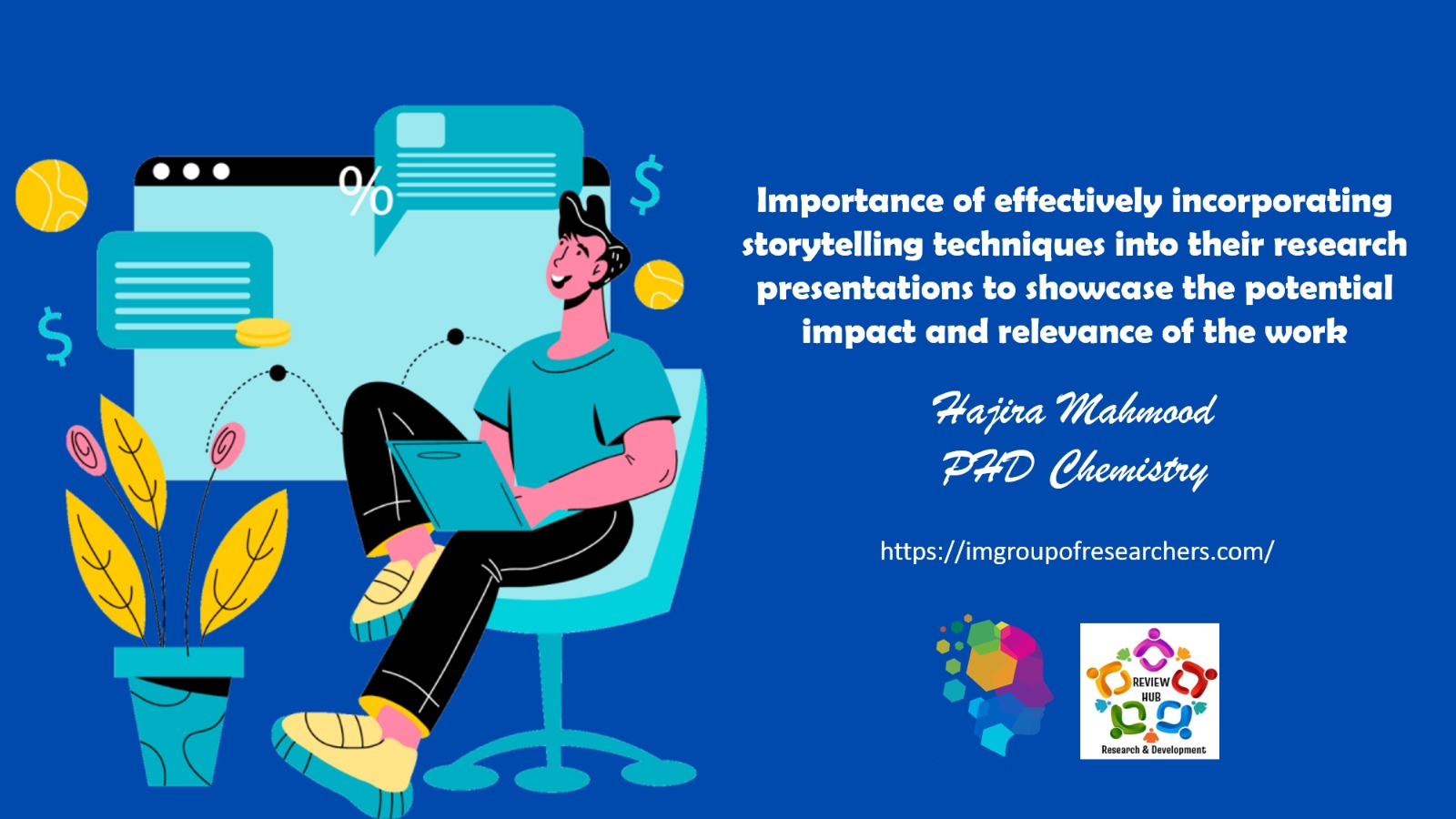Incorporating storytelling techniques into research presentations can be a powerful way for researchers to showcase the potential impact and relevance of their work. By incorporating these storytelling techniques into their research presentations, researchers can effectively showcase the potential impact and relevance of their work, captivate the audience, and leave a lasting impression that resonates with funding organizations or other stakeholders. Here are some effective strategies to do so:
Author: Hajira Mahmood
1. Start with a captivating hook:
Begin your presentation with a compelling opening that grabs the audience’s attention and sets the stage for the story you are about to tell. This could be a thought-provoking question, a surprising statistic, or an intriguing anecdote related to the research topic.
2. Establish a narrative arc:
Structure your presentation like a story, with a clear beginning, middle, and end. Introduce the problem or research question as the “conflict,” explain the methodology and findings as the “rising action,” and present the potential impact and relevance of the research as the “resolution” or “climax.”
3. Connect on an emotional level:
Appeal to the emotions of your audience by incorporating personal stories or real-life examples that demonstrate the human impact of your research. Share anecdotes, case studies, or testimonials that illustrate how your work can make a difference in people’s lives or address a pressing societal issue.
4. Use vivid language and imagery:
Paint a vivid picture with your words by using descriptive language and imagery. Help your audience visualize the research context, the challenges faced, and the potential outcomes. Engaging the audience’s senses through language can make the research more relatable and memorable.
5. Show the journey, not just the destination:
Share the process and challenges encountered during your research journey. Highlight the obstacles, setbacks, and breakthroughs that you experienced. This helps create a sense of authenticity and resilience, making your research story more compelling and relatable.
6. Craft a clear and concise message:
While storytelling is important, ensure that your research message remains clear and concise throughout the presentation. Clearly articulate the research objective, methodology, and key findings, while weaving in the storytelling elements to enhance the impact and relevance of your work.
7. Use visual aids effectively:
Incorporate visuals such as images, charts, or infographics to support and enhance your storytelling. Visual aids can help create a stronger impact and engage the audience visually. Ensure that your visuals are relevant, easy to understand, and visually appealing.
8. Engage the audience:
Actively involve the audience in your storytelling by asking questions, encouraging participation, or eliciting their thoughts and opinions. This creates a more interactive and engaging experience, allowing the audience to connect with your research on a deeper level.
9. Keep the narrative focused:
While storytelling is valuable, ensure that the narrative remains focused on the research’s potential impact and relevance. Avoid digressions or excessive tangents that may distract from the main message. Every element of the story should serve the purpose of highlighting the research’s significance.
10. Practice and refine your delivery:
Rehearse your presentation and pay attention to your delivery. Practice your storytelling techniques, timing, and body language to effectively engage and captivate your audience. Seek feedback from peers or mentors to refine your storytelling skills.
Also read: Research Integrity And Sponsored Operations
Follow Us on

